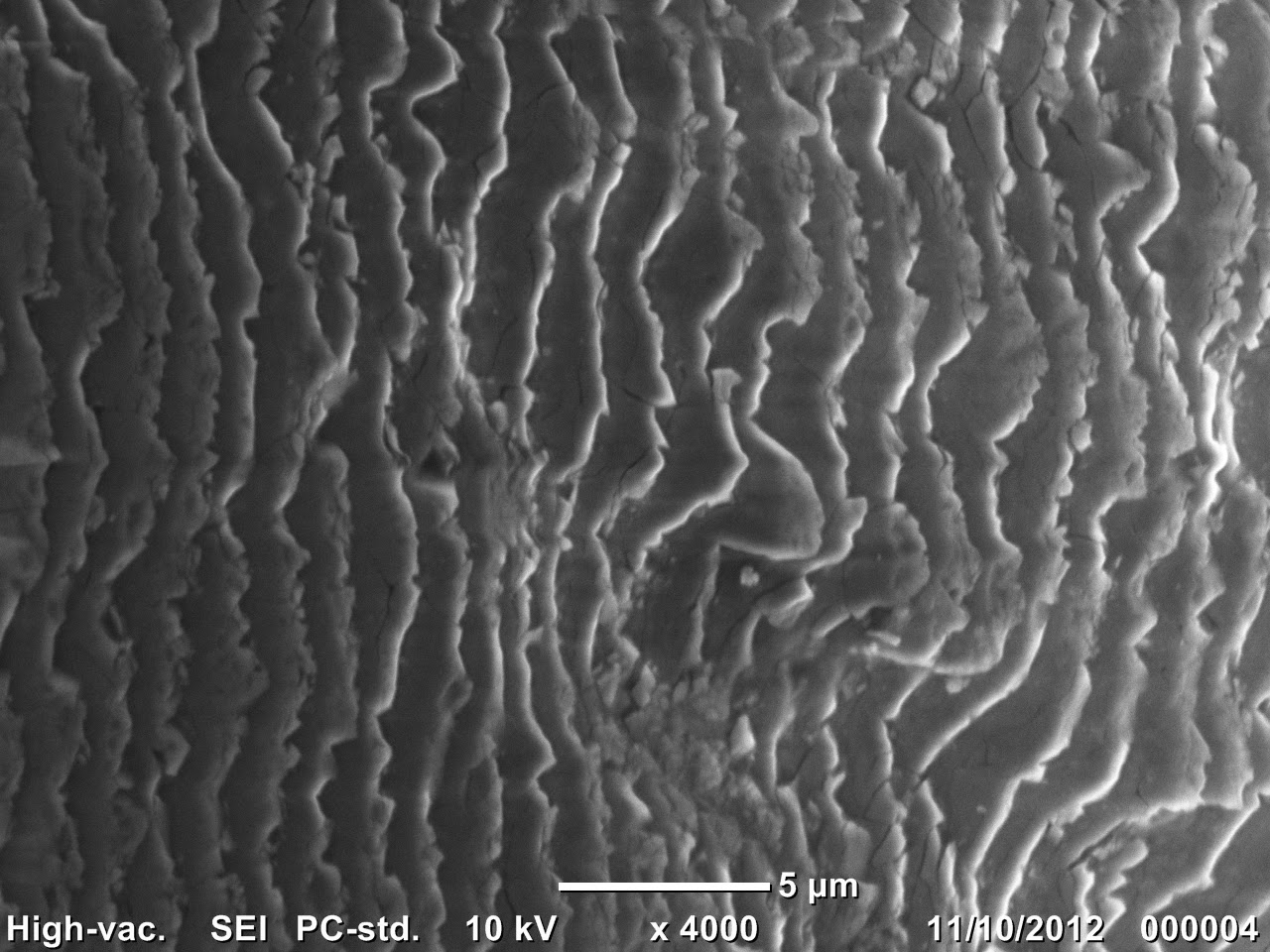Just got engaged to the beautiful Louise. At dinner a letter was brought out with dessert with the SEM image of the engraving on the ring and she said 'Yes'!
The engraving is 100 microns tall about the width of a human hair. It was machined with the femtosecond laser at the Photon Factory.
Something we weren't expecting was the small ripples formed by the laser inside the letters. This gave a grating which made it opalescent under the optical microscope. Sort of like the Paua shell. We use this in the lab to increase the efficiency of solar cells. We have currently only found a few metals that react to the laser in this way. So the white gold was unexpected.









